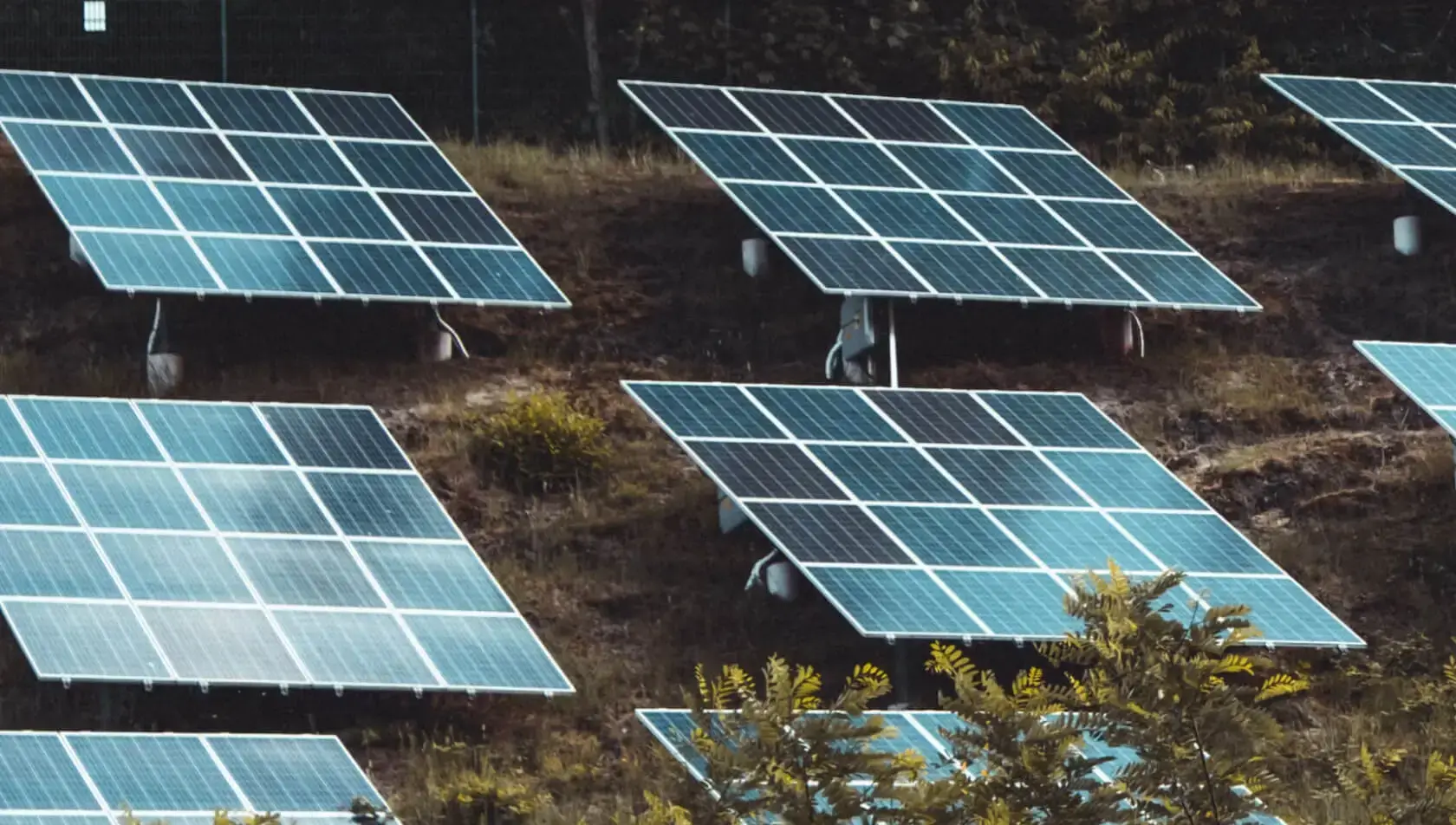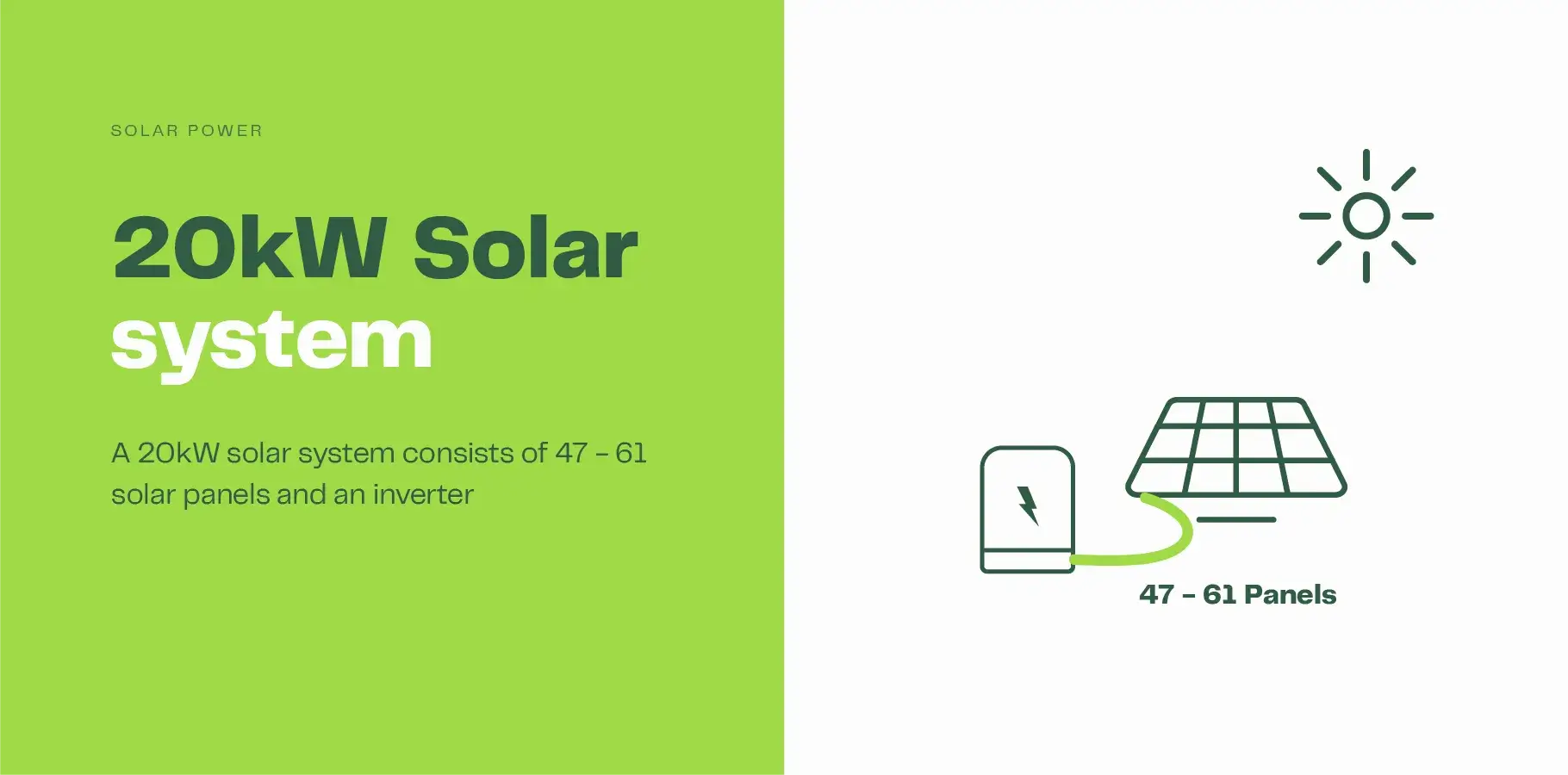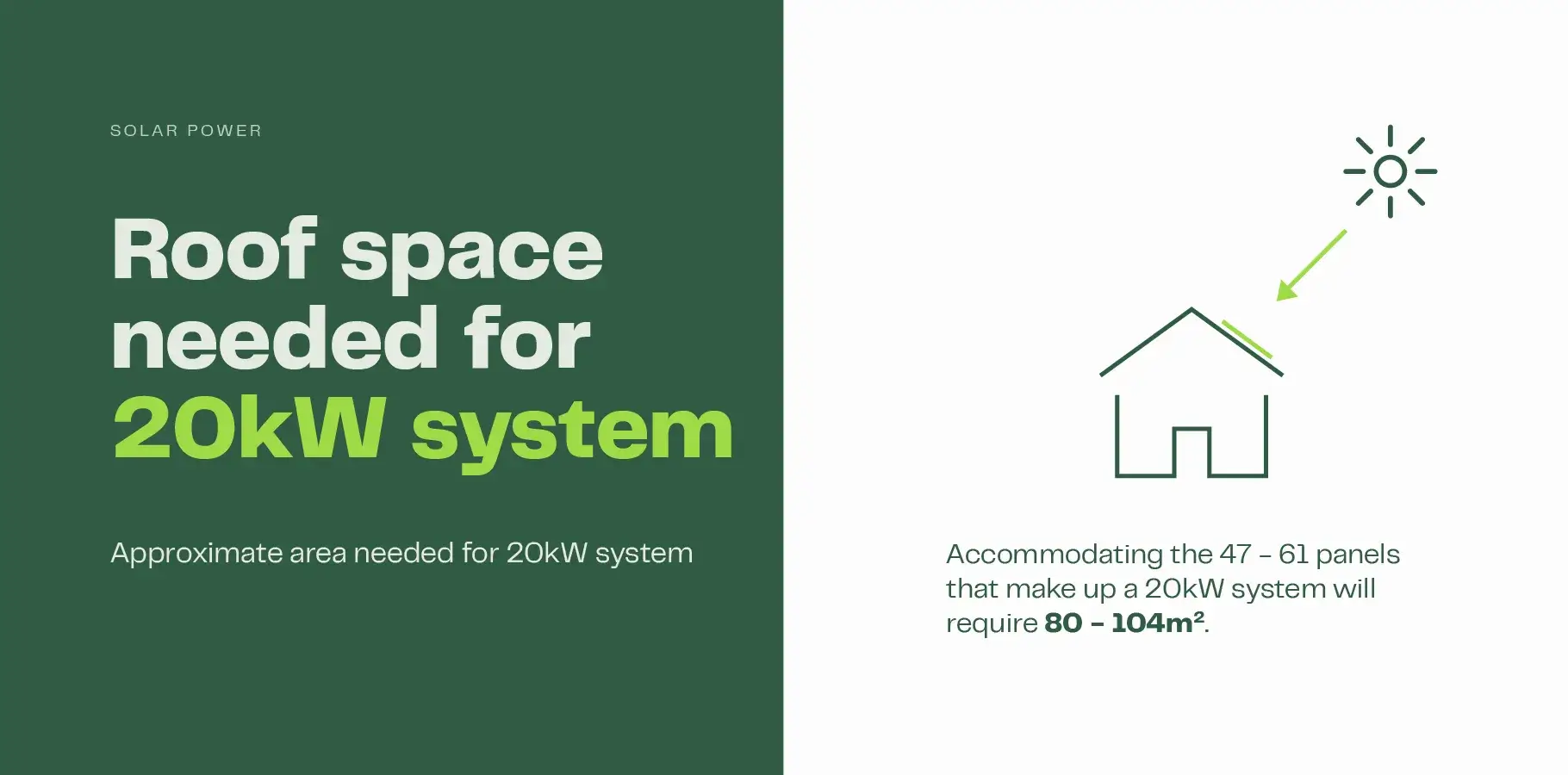20kW Solar System Prices, Output, Savings
A complete guide to 20kW solar panel systems
Make no mistake, a 20kW solar system is a seriously capable solar system that can significantly reduce (or eliminate) your energy costs and provide substantial savings to your home or business after the initial payback period.
As energy costs continue to increase and feed-in tariffs continue to decline, a 20kW solar system becomes an even more attractive option for those looking to maximise their energy independence, reduce their carbon footprint, and enjoy long-term savings.
With a daily power output north of 70kWh each day depending on your location and the position of your property, a 20kW solar system has the potential to generate enough power to pay for the upfront cost and become an ROI positive investment for most businesses in a few short years.
How much does a 20kW solar system cost in Australia?
The average 20kW solar system in Australia costs between $19,000 and $24,000, depending on the quality of components as well as the rebate and incentive eligibility.
Residents in Perth typically enjoy the lowest cost for a 20kW solar system with an average price of $19,000, while residents in Melbourne can expect to pay slightly more with an average unit price of $19,864 for a 20kW solar system.
Average 20kW system prices in major cities:
| City | Price |
|---|---|
| Adelaide | $19,580 |
| Brisbane | $19,220 |
| Melbourne | $19,864 |
| Perth | $19,000 |
| Sydney | $19,180 |
There are, of course, cheaper 20kW solar systems on the market. The figures above are indicative of high-quality, efficient systems that are built to last and provide the maximum allowable energy output for a 20kW solar system.
How many solar panels for a 20kW solar system?
Depending on the exact make and model, solar panels typically have a power output between 330W to 430W per panel. As technology continues to improve, the average solar panel efficiency (size vs. output) continues to improve. Depending on the solar panels, a 20kW solar system typically uses between 47 - 61 individual solar panels and requires a roof size of around 80m2 – 104m2 to accommodate them.
Panel output (W) & number of solar panels required
| Power output of panel (W) | Number of panels |
|---|---|
| 330 | 61 |
| 340 | 59 |
| 350 | 58 |
| 360 | 56 |
| 370 | 54 |
| 380 | 53 |
| 390 | 52 |
| 400 | 50 |
| 410 | 49 |
| 420 | 48 |
| 430 | 47 |
How much energy can a 20kW solar system produce?
The amount of energy that a 20kW solar system can produce is largely dependent on your location, the positioning of your solar panels, and a myriad of other factors that will be unique to your property.
As a guide, residents in Perth can expect the highest output from a 20kW solar system with as much as 88.0 kWh of energy produced each day. At the other end of the scale, residents in Melbourne who enjoy significantly less sunlight than those in Perth are likely to produce around 72.0kWh from a 20kW solar system.
20kW system output in major cities:
| City | Solar output |
|---|---|
| Adelaide | 84.0 kWh |
| Brisbane | 84.0 kWh |
| Melbourne | 72.0 kWh |
| Perth | 88.0 kWh |
| Sydney | 78.0 kWh |
Of course, the most important variable to consider when projecting energy output from a 20kW solar system is seasonality and weather. Solar panels will produce less power in winter and more in summer. For this reason, investing in a solar battery to store your solar energy, or capitalising on the best feed-in tariff rates is an effective way to store or capitalise on excess power in the warmer months. Understanding seasonal usage patterns can help to better understand your energy requirements and suitability for a 20kW solar system for your home or business.
Roof space required for a 20kW solar system
The average roof space required for a 20kW solar system ranges from 80m2 – 104m2 depending on the output and size of each solar panel.
The table below provides an indicative guideline for the roof space required based on the output of each solar panel and the number of panels that would be required to achieve a 20kW output based on average solar panel size of 1.7m (H) x 1.0m (W).
Average roof space required for a 20kW system
| Power output of panel (W) | Number of panels | Roof space required m2 |
|---|---|---|
| 330 | 61 | 104 |
| 340 | 59 | 100 |
| 350 | 58 | 99 |
| 360 | 56 | 95 |
| 370 | 54 | 92 |
| 380 | 53 | 90 |
| 390 | 52 | 88 |
| 400 | 50 | 85 |
| 410 | 49 | 83 |
| 420 | 48 | 82 |
| 430 | 47 | 80 |
Batteries required for a 20kW solar system
Depending on your electricity load profile, a 20kW solar system can charge anywhere between 20 - 60 kWh of battery storage.
The number of batteries you need for a 20kW system depends on how much electricity your household, or business, consumes during daylight hours. For example, if a business located in Sydney uses 80 kWh of electricity per day, and consumes 50% during daylight hours (40 kWh), the solar panels can charge up to 38 kWh of batteries - assuming the system generates 78 kWh of electricity per day.
The table below shows battery storage size for a 20kW system for various daylight electricity consumption rates:
| Daylight electricity consumption rate | Solar self-consumed (kWh) | Battery storage (kWh) |
|---|---|---|
| 25% | 20 | 58 |
| 40% | 32 | 46 |
| 50% | 40 | 38 |
| 60% | 48 | 30 |
| 75% | 60 | 18 |
Cost of adding a battery to a 20kW solar system
Adding batteries to a 20kW system significantly adds to the cost. Battery prices for a large system like this typically hover around $1,200 per kWh of storage capacity. If you were to add two 10 kWh batteries, expect to add an extra $24,000 to the cost of the system. Adding four 10 kWh batteries would add roughly $48,000 to the system cost.
Payback period for a 20kW solar system in Australia
The table below shows an indicative payback period and savings offered by a 20kW solar system in Australia based on different locations around the country. The table assumes daily electricity consumption of 68 kWh per day, high self-consumption (50%) and some of the more favourable feed-in tariffs offered in specific states and territories.
| City | Cost | Electricity price | Feed-in tariff | Self-consumption | Annual savings | Payback period |
|---|---|---|---|---|---|---|
| Adelaide | $19,577 | $0.43 | $0.07 | 50% | $6,685 | 2.9 |
| Brisbane | $19,217 | $0.28 | $0.07 | 50% | $4,892 | 3.9 |
| Melbourne | $19,872 | $0.28 | $0.05 | 50% | $4,240 | 4.7 |
| Perth | $19,008 | $0.26 | $0.07 | 50% | $4,770 | 4.0 |
| Sydney | $19,187 | $0.33 | $0.07 | 50% | $5,240 | 3.7 |
To calculate and accurately project your estimated payback period from a 20kW solar system, it’s important to consider your current energy consumption patterns and specific rates to find the most accurate projection.
Suitability for a 20kW solar system
Businesses or residential properties with an average daily energy consumption of 60 kWh to 80 kWh and available roof space of 80m2 to 104m2 are the ideal candidates for a 20kW solar system.
In most cases, the energy produced by a 20kW solar system will be most suitable for small to medium sized businesses with moderate energy consumption requirements. Of course, as energy dependency increases and Electric Vehicles (EV) become commonplace in Australia households, a 20kW solar system becomes an increasingly viable option for residential properties.
As an example, a residential property with 10kW system that produces around 40kWh per day may find that the addition of an electric vehicle like a Tesla Model 3 that uses half of its available 60kWh (30kWh) battery each day could now benefit from a 20kW system to supplement the additional 30kWh required of an evening to charge the battery.
- A guide to solar for your home
- Are solar panels worth it
- A guide to 3kW solar systems
- A Guide to 4kW solar systems
- A guide to 5kW solar systems
- A guide to 6.6kW solar systems
- A guide to 8kW solar systems
- A guide to 10kW solar systems
- A guide to 13kW solar systems
- A guide to hybrid solar systems
- A guide to off-grid solar
- 20kW Solar system overview
- How much does a 20kW solar system cost in Australia?
- How many solar panels for a 20kW solar system?
- How much energy can a 20kW solar system produce?
- Roof space required for a 20kW solar system
- Batteries required for a 20kW solar system
- Payback period for a 20kW solar system in Australia
- Suitability for a 20kW solar system

Are you ready to compare solar quotes?
Get 3 free quotes and start your solar journey today.
Get free quotes


